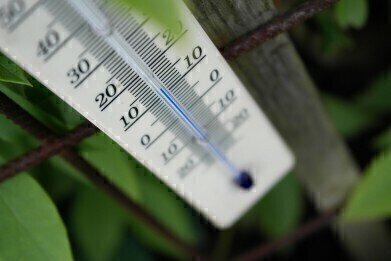Air Monitoring
Why Are Mercury Emissions Harmful?
May 01 2019
A naturally-occurring element that is foundin the Earth’s crust, mercury is emitted into the atmosphere through many natural sources, such as volcanoes and forest fires. In its purest form, mercury is not particularly harmful; however, anthropogenic industry and activity have caused mercury emissions to increase significantly in recent years, leading to damaging amounts of mercury in the atmosphere.
Sources of manmade mercury pollution
The largest source of manmade mercury emissions is artisanal and small-scale gold mining (ASGM), which is responsible for roughly 37% of all emissions. Coal combustion is not too far behind with almost a quarter (24%) of all anthropogenic emissions, while cement production, non-ferrous metals production and consumer products are all other contributing factors.
Elsewhere, mercury can leach directly into the earth through the propagation of fungicides in agriculture, while the combustion of other fossil fuels such as oil, gas and wood all play their part. It’s estimated that at present, between 5,000 and 8,000 tonnes of mercury are released into the atmosphere every year.
Mercury contamination
Mercury poses the biggest problem when it enters our rivers, seas and oceans - and unfortunately, a high percentage of all mercury emissions eventually end up in these locales. That’s because it falls back to the Earth in the form of raindrops of dry gas, or can pervade agricultural run-off and bypass wastewater treatment controls to find its way into our waterways.
Once here, mercury accumulates on the seabed and reacts with native bacteria, which transform it into a number of different compounds. One of the most commonly occurring and most toxic by-products of this process is methyl mercury (CH3Hg+), which is easily consumed by small organisms. This allows it a route in the food chain, where bioaccumulation can lead to concerning amounts of the substance stored in the fat of larger animals.
Mercury’s impact on human health
The risks posed by mercury first came to our attention in the 1950s and 1960s through the Minamata Bay tragedy in Japan. A chemical factory had been discharging mercury waste into the Minamata Bay, with approximately 600 tonnes of methyl mercury finding its way into the waterway between 1932 and 1970.
The first adverse effects of this pollution were spotted in animal life. Birds flew haphazardly, octopuses could no longer evade human capture and cats suffered seizures. People soon followed, with convulsions and excessive salivating a common occurrence. There were also many premature deaths, especially among the infant population of the surrounding region.
What can be done?
Once the leak had been discovered, the chemical factory was banned from discharging its waste into the Bay. However, even as recently as 10 years ago, the legislation surrounding mercury emissions was far more lax than in comparison to other damaging chemicals. Alongside sulphur, mercury has benefited from a fresh approach to the monitoring and control of its emissions, thus resulting in reduced environmental exposure and a healthier planet all round.
A movement away from fuel sources which cause high levels of mercury emissions, alongside capture and storage facilities to limit unavoidable emissions as much as possible, is key to ensuring that mercury concentrations in the atmosphere are not allowed to reach a level at which they begin to spiral out of control.
Digital Edition
IET 34.2 March 2024
April 2024
Gas Detection - Biogas batch fermentation system for laboratory use with automatic gas analysis in real time Water/Wastewater - Upcycling sensors for sustainable nature management - Prist...
View all digital editions
Events
Apr 30 2024 Melbourne, Australia
Apr 30 2024 Birmingham, UK
May 03 2024 Seoul, South Korea
May 05 2024 Seville, Spain
May 06 2024 Minneapolis, MN, USA


















